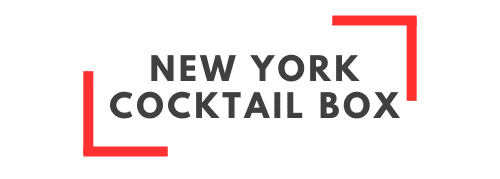The latest design trends

The realm of design is an ever-evolving space, with trends that shift, expand, and transform in constantly stimulating ways. As we navigate through the moments that the year has given us, we tune in to the latest buzz in the design industry. From graphic designs that capture the zeitgeist, to interior designs that redefine spaces, and furniture designs that blend functionality and aesthetics. Whether you are a design enthusiast or a professional designer, this comprehensive overview will keep you up-to-date with the hottest trends of the year.
Graphic Design Trends
The world of graphic design is continually shifting, with designers always on the hunt for fresh sources of inspiration. In recent times, we’ve seen significant changes influenced by a blend of technology, societal changes, and creative exploration.
Dans le meme genre : Travel in business class with jetstar business class at reduced prices
The trend that has been making rounds in the graphic design world this year is a return to the basics. The focus has shifted towards minimalist designs, with an emphasis on colors, typography, and uncomplicated graphics. The use of bold colors and gradients has become increasingly popular, creating designs that are vibrant and eye-catching. To add a touch of nostalgia, designers are also revisiting retro and vintage styles, blending them with modern elements to create something entirely unique.
Another emerging trend is the use of data in graphic design. Designers are finding innovative ways to incorporate data into their designs, transforming dull statistics into visually appealing infographics. This trend not only makes the information more digestible but also adds an extra layer of aesthetic appeal.
A lire également : What woman's lover necklace should you give your girlfriend?
Brand Design Trends
In the realm of brand design, the year has brought along a shift towards authenticity and simplicity. Brands are opting for designs that are clean, minimalist, and easy to recognize. The focus is on creating a strong visual identity that resonates with the target audience, while also standing out from the competition.
The use of bold, contrasting colors has become a popular trend in brand design. This trend allows brands to create designs that are dynamic, energetic, and instantly recognizable. The color choice plays a crucial role in this, with brands carefully selecting their color palette to convey their brand personality effectively.
Personalization is another significant trend in brand design. Brands are creating designs that are tailored to their audience’s preferences and behaviors. This involves using data to understand what resonates with the audience and incorporating these insights into the design process. The outcome is a brand design that is not only visually appealing but also personalized and relevant to the target audience.
Furniture Trends
The furniture industry has seen a resurgence of classic, timeless designs this year. Furniture designers are revisiting traditional styles and giving them a modern twist, creating pieces that are both functional and aesthetically pleasing.
The trend towards sustainable and eco-friendly furniture has been growing as well. Designers are opting for materials and manufacturing processes that are environmentally friendly, creating furniture that not only looks good but also contributes to the wellbeing of our planet.
The use of bold colors in furniture design has also been a popular trend. From vibrant hues to subtle pastels, designers are experimenting with color to create furniture pieces that make a statement. This trend is especially prevalent in interior design, where furniture pieces often serve as the focal point of the room.
Interior Design Trends
Interior design trends this year have been about creating spaces that are comfortable, functional, and stylish. One of the biggest trends is the incorporation of natural elements into the design. This includes the use of plants, natural materials like wood and stone, and colors that evoke a sense of calm and tranquility.
The trend towards open, airy spaces is another significant trend in interior design. Designers are opting for designs that maximize natural light, creating spaces that feel larger and more welcoming. The use of glass and mirrors is also popular, as they help reflect light and make the room feel more spacious.
The use of bold, vibrant colors in interior design has also been a popular trend. Designers are using color to create spaces that are dynamic, energetic, and visually appealing.
Style and Color Trends
When it comes to style and color, the trends this year have been all about boldness and vibrancy. The use of bold, contrasting colors has been a popular trend, with designers using color to create designs that are dynamic and eye-catching. This trend can be seen across various design disciplines, from graphic and brand design to furniture and interior design.
In terms of style, the trend has been towards a blend of modern and vintage aesthetics. Designers are revisiting traditional styles and giving them a modern twist, creating designs that are both timeless and contemporary.
As we navigate through the year, these design trends continue to evolve and influence the work of designers across the globe. Whether you’re a professional designer or a design enthusiast, keeping up with these trends can provide a source of inspiration and help spark fresh, creative ideas.
Social Media Design Trends
As we continuously connect and engage through social media platforms, the design trends in this space have also evolved to capture and retain user attention. One of the major social media design trends this year is the use of bold colors and geometric shapes. These elements create visually striking posts that stand out in busy feeds, igniting interest and encouraging interaction.
Another trend in social media design is the use of data visualization, creating engaging and informative content. Social media platforms cater to the fast-paced, scrolling nature of today’s consumers, making infographics a highly effective way to share information. In these graphics, data is transformed into a visual narrative that is both easy to understand and share, expanding its reach and impact.
The use of serif fonts, which were once thought to be outdated for digital platforms, has also seen a resurgence. This design trend adds a touch of elegance and sophistication to social media posts, providing a nice contrast to the more commonly used sans-serif fonts.
Instagram post designs have also seen a trend towards more authentic and less curated images. This shift aligns with the global trend towards authenticity and transparency, resonating well with audiences who value genuine content over polished perfection.
Web Design Trends
Web design trends this year have focused on enhancing user experience and engagement. A significant trend in web design is the use of minimalist design elements. This includes clean lines, plenty of white space, and a simple color palette. Such designs provide a clutter-free environment that allows users to focus on the content, resulting in a better user experience.
Another web design trend is the use of bold color palettes and gradients. These design elements create visually appealing websites that engage users. Alongside the color trend, we also see the use of bold, oversized typography to create a strong visual impact.
Animation has also seen a resurgence in web design. The use of animation, whether subtle or bold, adds an element of surprise and delight to websites, enhancing user engagement.
As we wrap up the year, it’s clear that the design industry continues to evolve, with new trends emerging and old ones being redefined. As designers, keeping up with these trends is crucial for staying relevant and inspiring fresh ideas.
Conclusion
A look back at the design trends in 2023 reveals a push towards authenticity, simplicity, and boldness. From graphic design to brand design, social media, web design, and even furniture and interior design, these themes have been prevalent. The use of bold color palettes was a standout trend across all areas of design, used to create dynamic and visually appealing designs.
In terms of style, a blend of modern and vintage aesthetics was favored, with designers revisiting traditional styles and giving them a fresh, contemporary spin. The use of data visualization also became a popular tool for presenting information in a visually engaging way.
As we approach the end of the year, it will be interesting to see how these trends further evolve and influence the design industry in the coming year. As designers or design enthusiasts, staying updated with these trends provides a rich source of inspiration, sparking creativity, and innovation. So, here’s to embracing the design trends of today and anticipating those of tomorrow!
